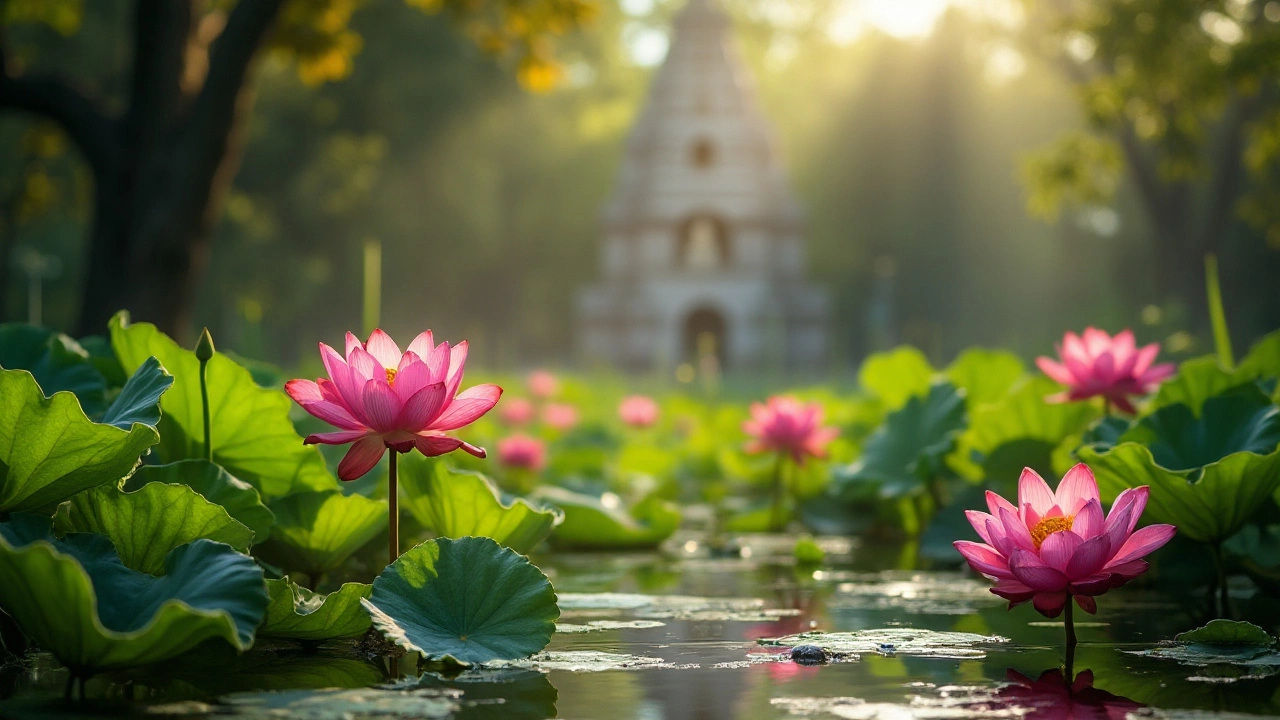Sacred Lotus: How to Grow, Care for and Enjoy This Iconic Indian Flower
The sacred lotus isn’t just a pretty flower – it’s a part of Indian culture, art and religion. If you’ve ever wanted to see those bright pink pads floating on your pond, you’re in the right place. Below you’ll find straight‑forward advice on where to plant it, what it needs to thrive, and why it matters.
Why the Sacred Lotus Matters
In Hinduism and Buddhism the lotus stands for purity, rebirth and spiritual growth. Its ability to rise clean from muddy water makes it a perfect symbol for overcoming challenges. Home gardeners love it for the same reason – a little effort, big visual reward.
Beyond symbolism, the lotus is hardy when its basics are met. It can handle hot Indian summers, and it lives for many years if the pond stays healthy. That durability makes it a smart choice for both small backyard ponds and larger community water features.
Growing the Sacred Lotus in Your Garden
Pick the right spot. Lotus needs at least 30 cm of water depth in the growing season. A shallow pond, a large container, or a raised water garden works fine. Make sure the spot gets full sun – six to eight hours a day is ideal.
Use quality rhizomes. Buy healthy rhizomes from a reputable nursery. Look for firm, plump pieces with at least a few buds. Avoid any that look soft or rot‑smelling.
Plant properly. Fill a wide container with a layer of heavy soil or clay, then place the rhizome on top, buds facing up. Cover lightly with more soil – don’t bury it too deep. Add water slowly until the desired depth is reached.
Watch the temperature. Lotus grows best when water stays above 20 °C. In cooler regions, you may need a small water heater or to start the rhizomes indoors and move them outside once the weather warms.
Fertilize wisely. Use a low‑phosphorus, water‑soluble fertilizer once a month during the growth period. Too much fertilizer can cause algae, so follow the label instructions carefully.
Control pests and algae. Lotus isn’t prone to many pests, but snails can nibble at leaves. Hand‑pick them if you see any. For algae, reduce excess nutrients and consider a thin layer of mulch on the water surface.
Prune dead leaves. Removing yellow or decaying leaves helps keep the pond clean and lets the plant focus energy on new growth.
When the plant starts to flower, you’ll notice huge, fragrant blossoms opening in the morning and closing by afternoon. The sight of a lotus leaf floating beneath a pink flower is instantly calming.
If you’re curious about related topics, check out our guide on how deep drip irrigation lines should be buried for efficient water use, or read about zero‑waste fruits for sustainable garden cooking ideas.
With these simple steps, you can enjoy a sacred lotus that not only looks stunning but also carries a deep cultural story. Start small, watch the plant adapt, and soon you’ll have a living symbol of purity right in your own garden.
What Is the King of Flowers in India? The Sacred Lotus and Its Cultural Significance
The lotus is India's national flower and true king of flowers, symbolizing purity, spirituality, and resilience. Learn why it's revered across cultures, how to grow it, and where to see it in full bloom.
Exploring India's Sacred Lotus: A Symbol of Purity
The sacred lotus is renowned as a symbolic flower in India, embodying purity and transcendence. Rooted in the heart of Indian culture, this flower is celebrated for its beauty and spiritual significance in various religions. It plays an integral role in mythology and art, often depicted in traditional stories and paintings. Beyond its cultural importance, the lotus requires specific conditions to thrive in gardens, serving as a delightful challenge for gardeners. Learn about its historical impact and practical gardening tips for cultivating this beloved symbol in your home garden.
About
Flower Gardening
Latest Posts


Unlocking the Secrets of Regenerative Gardening for a Greener Planet
By Alden Thorne Nov 24, 2024

Where Does Ryobi Rank in Garden Tools?
By Alden Thorne Apr 5, 2025

Most Beautiful Flower in the World: What Truly Stands Out?
By Alden Thorne May 29, 2025


